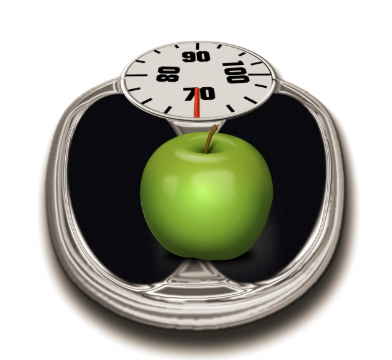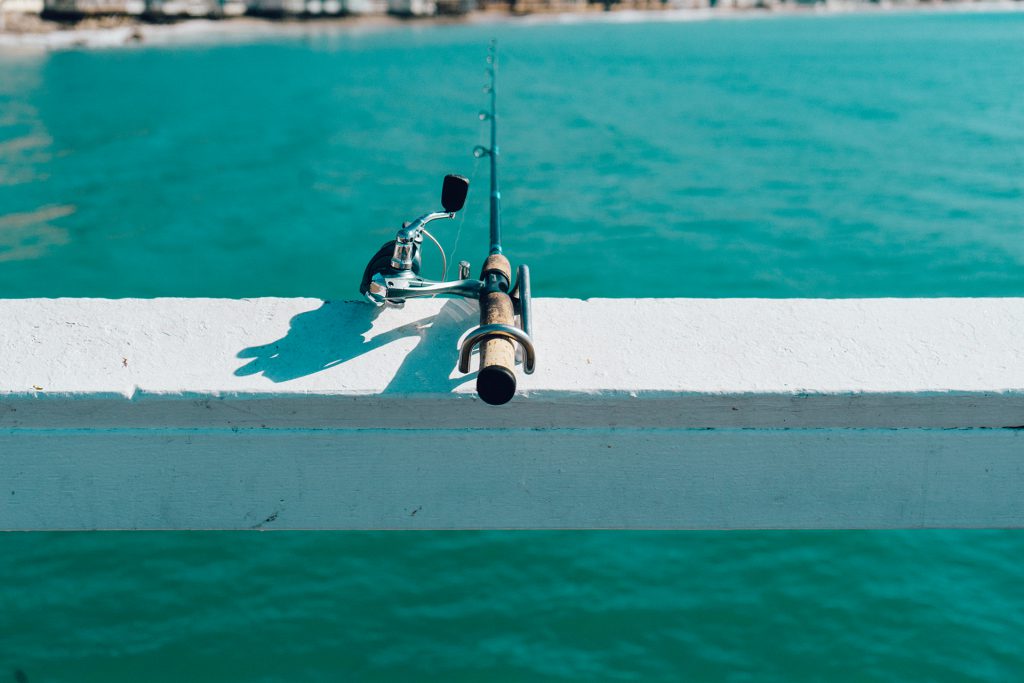Fad Diet Myth Busting
 There is a lot of misinformation about how we should and should not be eating. Any diet that reduces the number of calories you eat can help you lose weight, but fad diets may leave your intake of important nutrients low because they strictly limit or completely leave out whole food groups. While fad diets are often meant to help people lose weight, in the long-run they can make your weight go up and down, or just make you gain weight–neither of which are good for your health. No one food or diet is a magic “cure-all” for all our health problems. Likewise, no one food or diet is a cause of all our health problems.
There is a lot of misinformation about how we should and should not be eating. Any diet that reduces the number of calories you eat can help you lose weight, but fad diets may leave your intake of important nutrients low because they strictly limit or completely leave out whole food groups. While fad diets are often meant to help people lose weight, in the long-run they can make your weight go up and down, or just make you gain weight–neither of which are good for your health. No one food or diet is a magic “cure-all” for all our health problems. Likewise, no one food or diet is a cause of all our health problems.
Fad diets are everywhere you look, and it can be overwhelming trying to figure out what a healthy diet looks like with all of these conflicting claims. Let’s take a closer look at a few fad diets you may have heard of.
Gluten-Free: Gluten is a protein found in certain grains: wheat, barley, and rye. A gluten-free diet eliminates these grains from your diet.
- Myth: Grains that have gluten make you fat.
- Fact: Eating a lot of refined white grains (such as white wheat and white rice) is connected to weight gain. Eating whole grains (such as 100% whole wheat, brown rice, quinoa, and oats) can help you lose weight.
- Fact: You only need to avoid gluten if you have celiac disease.
Paleo: The paleolithic diet (often called the “paleo” diet) can be summarized as “if the cavemen didn’t eat it, then neither should you.” It eliminates grains, legumes (beans and nuts), peanuts, dairy, refined white sugar, potatoes, processed foods, salt, and refined vegetable oils.
- Myth: The cavemen weren’t fat, so if I eat like them, I’ll lose weight and be healthier.
- Fact: People who lived during the Paleolithic period only lived to be in their 20s, on average. While the paleo diet includes nutritious foods like fruits and vegetables, it doesn’t allow you to eat other nutritious foods like whole grains and legumes. Eating whole grains and legumes can help prevent and manage health problems like type 2 diabetes, high blood pressure, and heart disease.
Low-Fat: There’s a lot of debate on whether a low-fat diet or a low-carb diet is better for you. While diet trends today are swinging towards low-carb diets over low-fat, many people still follow a low-fat diet.
- Myth: If I eat less fat then I’ll lose more fat.
- Fact: Eating fewer calories, no matter where they come from, can help you lose weight. While it’s good to eat less saturated and trans fats, our bodies need unsaturated fats. Unsaturated fats are found in plant-based oils, avocados, nuts, seeds, and fish. Low-fat diets have not been shown to help with weight loss. In fact, by eating less fat, you may end up eating a lot of refined carbohydrates and sugar, which can lead to gain weight. Because fat helps keep us full, avoiding it all together may make us feel hungry faster, making us eat more.
Low-Carb & Ketogenic: Low-carb diets, the Atkins diet, and ketogenic (“keto”) diets look a lot alike. All three of these diets limit carbohydrates and increase fat intake.
- Myth: Low-carb diets will help you lose more weight than other diets.
- Fact: In the short-term, you may lose more weight on a low-fat diet, but in the long-term, weight loss is about the same for low-fat diets as it is other diets. Eating fewer calories is more important for weight loss than the different amounts of macronutrients (carbohydrates, fat, and protein) we eat. The keto diet allows so few carbohydrates that it may be harmful to your health.
Before you start a diet like one of these, ask yourself these questions:
- Does this diet tell me I can’t eat a whole food group, or that I should avoid nutritious foods like fruits, vegetables, nuts, legumes, fish, or whole grains? Or that I should be afraid of a certain food?
- If I followed this diet, would I eat a lot of sugar, red meat, saturated fat, or highly processed foods that I should be limiting?
- Could I really stay on this diet long-term?
If the answer to any of these questions is “yes,” you may want to reconsider trying that diet.
Try to avoid restrictive diets that tell you not to eat specific foods that we know are good for our bodies. Instead, focus more on the way you eat as a whole, choosing nutritious foods like fruits, vegetables, legumes, whole grains, and low-fat dairy every day and letting “junk foods” have their place as well–just in smaller amounts and only sometimes. This can save you a lot of stress, time, and money that you might spend following a fad diet.
Fad diets will come and go, but a balanced diet including all food groups is the key to health throughout your lifetime!
-Cara Mowery
Super Stir Fry

Makes 2 servings | Serving size: 1 Cup
Ingredients
Choose 5 vegetables (½ cup of each)
- Onion
- Broccoli
- Celery
- Carrots
- Peppers
- Mushrooms
- Squash
- Zucchini
- Cauliflower
Choose 1 starch (1 cup per person, cooked according to package directions)
- Brown rice
- White rice
- Rice Noodles
- Whole-wheat spaghetti noodles
Other Ingredients
- ¼ cup stir-fry sauce (see recipe below)
- 1-2 tablespoons vegetable oil
Directions
- Wash and chop selected vegetables into small evenly sized pieces. You may cut them into circles, strips, or cubes as desired. A variety of shapes will make the stir-fry more pleasing to the eye.
- Make Stir-Fry Sauce (see recipe below).
- Heat a small amount (1 tablespoon or less) of vegetable oil over high heat in a 10-inch frying pan, electric skillet, or wok.
- Keeping the heat high, add vegetables to the pan in order of firmness–harder foods first and ending with the softest foods.
- Toss vegetables during cooking to keep them from sticking. When stir-frying, cooked vegetables should still be crisp and retain their bright color.
- Add sauce to taste (about ¼ cup). Stir-fry until all vegetables are thoroughly coated.
- Serve with the starch of choice.
Stir-Fry Sauce
Makes ½ cup
Ingredients
- 2 tablespoons sodium-free beef bouillon
- 2 teaspoons apple cider vinegar
- 1 teaspoon dark molasses
- ⅛ teaspoon ground ginger
- Dash of black pepper
- ⅛ teaspoon garlic powder
- 1 cup water
- 2 tablespoons cornstarch
Directions
- Combine all ingredients in a saucepan and boil gently, uncovered for 5 or more minutes or until sauce is reduced to ½ cup.
- When cooked, pour into a lidded jar and keep in the refrigerator.
- Stir before using.
Written by: Janet Bryan
July is National Grilling Month

Nothing says “summertime” quite like grilling out! Having a cookout or barbecue in the summer is a great way to connect with your friends and family, play outdoor games, and enjoy each other’s company. While we often think of meat like hamburgers, hot dogs, and chicken when we grill, you can also try grilling fruits and vegetables!
Grilling fruit brings out fruits’ natural sweetness. Try grilling fresh fruit like pineapple, peaches, pears, watermelon, apples, and mango. Canola oil has a mild flavor and makes a good choice for brushing on fruit when you’re grilling to ensure it doesn’t stick to the grill. You can cut fruit like peaches and apples in half for grilling. Grilled pineapple cut in rings is great served over fish. Serve grilled fruit with low-fat frozen yogurt for a delicious dessert sure to please the whole crowd!
Grilled vegetables have a distinct flavor, which might make children (and adults!) more willing to try them, so a cookout is a great time to explore new vegetables! To grill fresh vegetables, rinse the vegetables under running water. Chop vegetables into large chunks. If you’d like, you can put vegetables on grilling skewers. Brush vegetables with oil and seasoning or a marinade of your choice, such as this Olive Oil Lemon Marinade. Turn vegetables once during grilling and brush with additional oil and seasonings or marinade to ensure they stay moist and flavorful.
Vegetables like bell peppers, mushrooms, corn, summer squash/zucchini, tomatoes, and onions are popular grilling choices, but you can also grill other vegetables like artichokes, asparagus, beets, Brussels sprouts, cabbage, carrots, cauliflower, eggplant, green beans, potatoes, and turnips.
Tell us what your family thinks of any grilled fruits and vegetables you try!
-Cara Mowery
Fitting in Physical Activity

School-aged children spend much of their day focused on school between waking up early, spending all day at school, and doing homework when they get home. With the demands of school, it can be hard to fit in physical activity, especially when the whole family is tired from a long day. Physical activity can help us sleep better, reduce stress, and keep our brains working well.1 All of these benefits are especially important for children! To enjoy the benefits of physical activity, think of ways you can fit physical activity into you and your children’s day. Encourage children to do activities that they already enjoy and even try some new ones. When possible, participate in physical activity with your children to set a good example! Here are some other ideas to help your children fit in more activity–no matter what time of day or day of the week it is:
- At Home: There are endless ways children can be active safely in the house, whether they’re playing a game, stretching or doing yoga, or exercising using a formal work-out routine. Even cleaning and other household chores can be a great way to exercise at home! Children can play games that require more space in the yard or another safe place in the neighborhood with family and neighbors, such as an outdoor basketball court. Try taking a walk around your neighborhood as a family after school. Toddlers can benefit from moving around instead of sitting in stationary bouncy seats–provide plenty of toys and activities inside that get them moving. Since preschoolers spend more time at home than school-aged children and love to be active, there are plenty of opportunities for preschoolers to play at home. Check out these tips for encouraging physical activity no matter what age your child is.
- At School: Recess and physical education classes provide great opportunities for your children to be active at school and to take a break from regular classroom instruction. Encourage your children’s teachers to include activity in classroom instruction, such as these “energizers” for school. If you live close to your child’s school, you can walk with them to and from school. School-aged children old enough to play after-school sports may enjoy playing a sport that interests them, such as soccer, track & field, or basketball.
- On the Weekend: Weekends are a great time to be active as a family! You can take your children on outings to a park, playground, walking trail, swimming pool, or other locations. Children old enough to play organized sports can join a team, and they may have games over the weekend. Keep a list of activities your children enjoy and let them take turns choosing what activities you’ll try together that weekend.
No matter what physical activity your children participate in, it’s always more fun with someone else! So whenever possible, make physical activity a family event!
How else can you fit more activity into your family’s day?
References
Fishing

National Go Fishing Day is on June 18! Fishing allows you to peacefully enjoy the outdoors while still incorporating physical activity. You can fish in ponds, rivers, lakes, and oceans, which gives you flexibility and variety in where you choose to fish. It’s a great activity for children to learn since it’s low-pressure and leisurely.
When fishing with your children, plan for short nearby trips. Also, make sure that you (or whatever adult is fishing with them) have your fishing license and are up-to-date on all fishing regulations for your state. Wear life jackets if you’re fishing from a boat. Children and beginning fishers should use a light line, bobber, and a barbless hook. For instructional videos and tips, visit https://www.youtube.com/user/takemefishingfilms/featured.
Regulations on fishing in public waters vary by state. In North Carolina, you need a license to fish in public water (this doesn’t apply to private land) if you’re 16 years old or older. Children under 16 years old don’t need a fishing license as long as they’re with a fishing licensed adult. You can purchase a license online, by telephone or in-person. For more information on fishing licenses in North Carolina, visit http://www.ncwildlife.org/Licensing/Hunting-Fishing-Trapping-Licenses.
Paddling a boat and hiking to your fishing spot are great aerobic activities as they make your heart beat faster. Fishing itself works the muscles in your arms as you cast and reel. Being in the sun while you fish can help increase your vitamin D levels. Since fishing isn’t a fast-paced activity, it can help relieve stress and teach patience (which is especially helpful for children)!
To find a public fishing place near you, visit https://www.takemefishing.org/where-to-fish-and-boat/.
Where will you and your family try fishing?